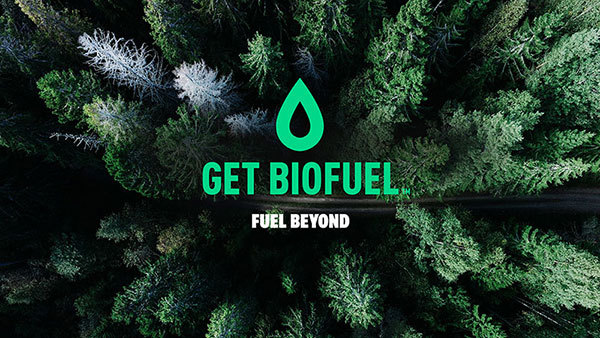Driving Behaviors and Gallons



PHOTO: GROWTH ENERGY
June 9, 2021
BY Lisa Gibson
Following and complementing its Prime the Pump initiative, Growth Energy is launching a consumer campaign to increase awareness of the environmental benefits of E15. The goal is to trigger more sales of E15 to consumers who want to make a small change for a big Earth impact. Ideally, they’ll fill up with E15 and also demand more access to it.
Growth Energy’s Emily Skor, CEO, and Elizabeth Funderburk, vice president of communications and public affairs, speak enthusiastically about their new endeavor, named Get Biofuel, and the goals they’re setting for it.
“What this campaign does is appeal to the emotion of wanting to do something in a small way that can benefit the environment,” Funderburk says.
“I’m really excited about it,” Skor adds. “The growth opportunity for the industry is going to be when E15 is the standard fuel offering nationwide. In order to get to that place, we’ve got a full throttle industry effort and you really have to pursue three different things.”
‘E15 Trifecta’
Skor calls the three-pronged approach the “E15 trifecta.” First is policy: summer E15 use is approved; there’s ongoing work toward favorable E15 labeling; and efforts are underway to ensure equipment compatibility and clarity on rules and regulations, Skor says. “There’s a whole program of work that we’re leading in that policy realm.”
Next is leveraging commercial opportunities and that’s where Prime the Pump shines—in expanding E15 availability from retailers, she says.
“The third leg of the stool to complete the entire market development strategy is prime the consumers to demand something different,” Skor says. “They need to demand a fuel beyond what they currently have in terms of their choice and that is what this campaign represents.
“This is where we connect the dots for the consumer. We showcase the environmental benefits of higher blends and encourage them to choose higher blends at the pump.”
Funderburk adds, “Everything we do is really with a focus on driving demand and we know what that means on the market development front. We also know what that means whether it’s in the states or on Capitol Hill, but throughout, the consumer really has a critical role to play.”
The Target
Based on extensive market research, Growth Energy has identified women and millennials as its target audience for Get Biofuel. “They are most likely to change their fuel choice, if you say to them, ‘I’ve got a fuel that’s better for the environment and better for the engine and is going to save you money,’” Skor says. “We’re targeting the consumer in her space. We’re targeting millennials and women, and those for whom climate consciousness is very top of mind. There’s a whole new generation of consumers and drivers who want to make a difference.”
“These were groups that really had interest in making a small change that could really benefit the environment and they found that really compelling,” Funderburk says. Women and millennials had a more open interpretation of biofuels than other target groups in the market research, she says.
Air quality and climate issues have never been more pervasive than they are now in influencing consumers’ purchase behaviors, Skor says. “It’s the right time because we’ve got the right mindset across the country.”
The Message
The environmental focus is crucial, both Skor and Funderburk agree. Get Biofuel will drive awareness of ethanol blends and the small changes that can be made while fueling up. “First, we raise awareness around these environmental benefits of biofuels, and then we want to connect them with the changes someone could make every day at the pump, spurring demand for E15 and higher blends, which ultimately will drive sales at the pump,” Funderburk says. “So we want to appeal to them and their wants to benefit the environment.”
Many in the millennial and female focus groups had positive impressions of biofuels, but didn’t have an opinion about ethanol, Funderburk says. “These days, people tend to be either really pro or really negative about ethanol. In this audience, many hadn’t formed an opinion so this was a good way to get in front of them and engage, educate.
“Many were new drivers and were interested in being more informed,” she adds.
Safety for vehicle engines will also be a main message. “We have to make sure consumers and these audiences know this will not harm their engines,” Funderburk says. “That’s a big stumbling block. That is the message that perpetuates.
“You can have a fresh new campaign look, but it does come down to brass tacks: Will this harm my engine? We have to give consumers what they need to feel confident that it will not.”
Get Biofuel is a three-year campaign that now is in a pilot phase with projects in Raleigh, North Carolina, and Salt Lake City, Utah. “A lot is in reach, but about 18 months into the program, we really want to see how this is impacting demand,” Funderburk says. “A lot will be identified from our initial pilot.” Eventually it will be nationwide.
“We’ll go where there’s availability, maximize the footprint and gauge where consumers are headed and where their interest is,” Funderburk says. “But we don’t want to limit it to those markets. There’s much to be done in those markets where there isn’t significant availability of E15 but there could be. … Ideally, we want people not only to go to the pump to fill up with E15, but also demand that they have that access to E15 at their local gas stations, as well.”
Get Biofuel is the logical next step after Prime the Pump. “Now we’re priming the consumer to demand that more,” Skor says.
“At the end of the day, we start by driving awareness, but this is about driving behavior change,” she adds.
The Outcome
In addition to awareness and education, Get Biofuel invites consumers to sign the Biofuel Pledge on its website, getbiofuel.com, outlining the decision to switch to a friendlier fuel. The implications for the community-forming pledge could be far reaching in the future. “It could mean something on the policy level eventually,” Funderburk says. “For now, it’s general for those who want to make a commitment and are deciding what that next step is.”
The Get Biofuel campaign is designed to pique interest and prompt further research on the part of the consumer, Funderburk says. “Once we appeal to them, they can go and proactively find out more about it,” she says. “They can have their own assessment. On the most basic level, this campaign is bumper stickers on top of bumper stickers.”
“This is a very empowering initiative,” Skor says.
“I’m really excited because it’s a quality of creative that we really haven’t seen in the industry,” she adds. “It’s really of a very high caliber and I’m excited about it.”
Author: Lisa Gibson
Editor, Ethanol Producer Magazine
701.738.4920
lgibson@bbiinternational.com
Published in July 2021 issue of Ethanol Producer Magazine
Advertisement
Advertisement
Advertisement
Advertisement
Related Stories
CoBank latest quarterly research report highlights current challenges facing the biobased diesel industry. The report cites policy uncertainty and trade disruptions due to tariff disputes as factors impacting biofuel producers.
The U.S. EIA on April 15 released its Annual Energy Outlook 2025, which includes energy trend projections through 2050. The U.S. DOE, however, is cautioning that the forecasts do not reflect the Trump administration’s energy policy changes.
The Michigan Advanced Biofuels Coalition and Green Marine are partnering to accelerating adoption of sustainable biofuels to improve air quality and reduce GHG emissions in Michigan and across the Great Lakes and St. Lawrence Seaway.
EIA reduces production forecasts for biobased diesel, increases forecast for other fuels, including SAF
The U.S. Energy Information Administration reduced its 2025 forecasts for renewable diesel and biodiesel in its latest Short-Term Energy Outlook, released April 10. The outlook for “other biofuel” production, which includes SAF, was raised.
FutureFuel Corp. on March 26 announced the restart of its 59 MMgy biodiesel plant in Batesville, Arkansas. The company’s annual report, released April 4, indicates biodiesel production was down 24% last year when compared to 2023.
Upcoming Events










